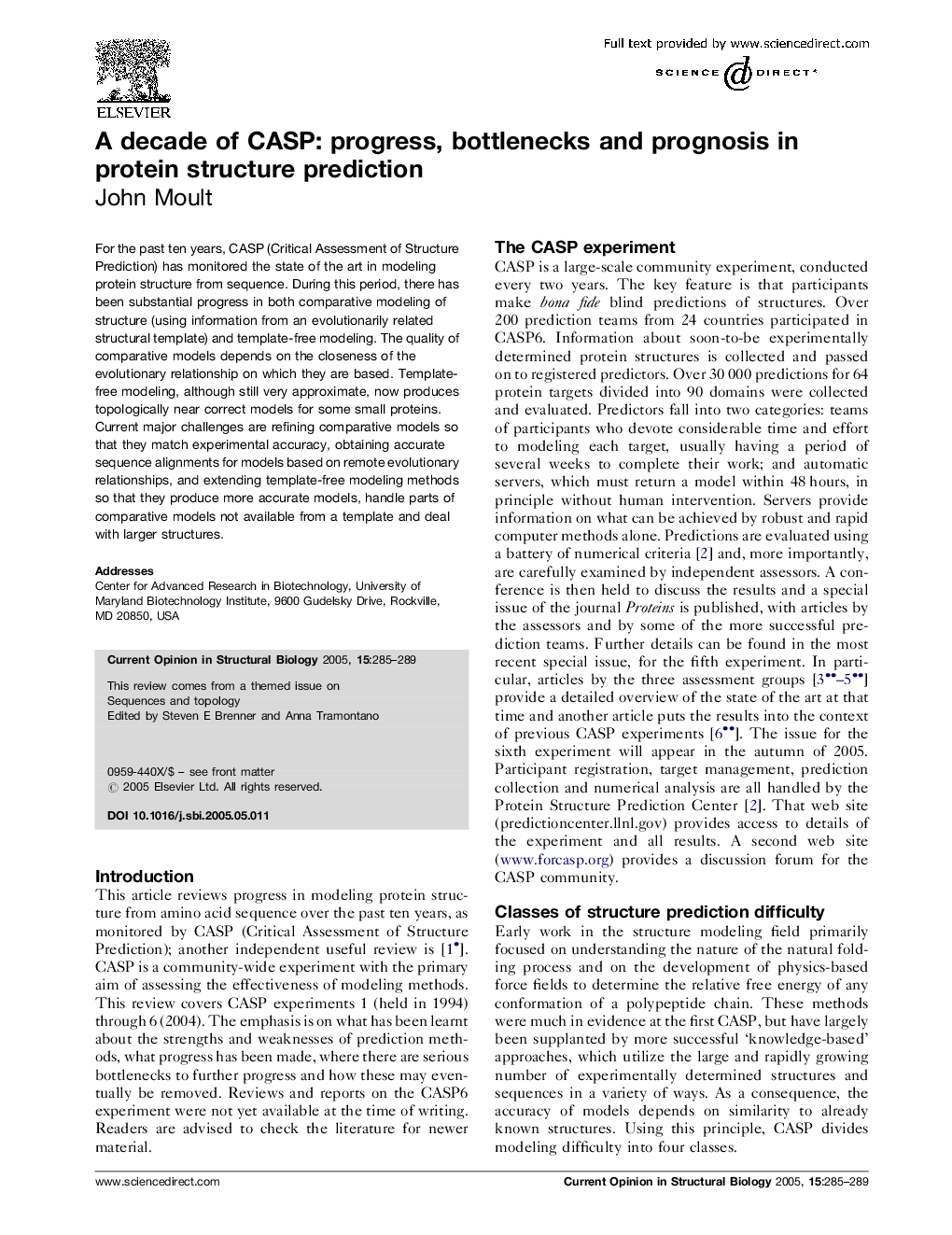| Article ID | Journal | Published Year | Pages | File Type |
|---|---|---|---|---|
| 10822766 | Current Opinion in Structural Biology | 2005 | 5 Pages |
Abstract
For the past ten years, CASP (Critical Assessment of Structure Prediction) has monitored the state of the art in modeling protein structure from sequence. During this period, there has been substantial progress in both comparative modeling of structure (using information from an evolutionarily related structural template) and template-free modeling. The quality of comparative models depends on the closeness of the evolutionary relationship on which they are based. Template-free modeling, although still very approximate, now produces topologically near correct models for some small proteins. Current major challenges are refining comparative models so that they match experimental accuracy, obtaining accurate sequence alignments for models based on remote evolutionary relationships, and extending template-free modeling methods so that they produce more accurate models, handle parts of comparative models not available from a template and deal with larger structures.
Related Topics
Life Sciences
Biochemistry, Genetics and Molecular Biology
Biochemistry
Authors
John Moult,
